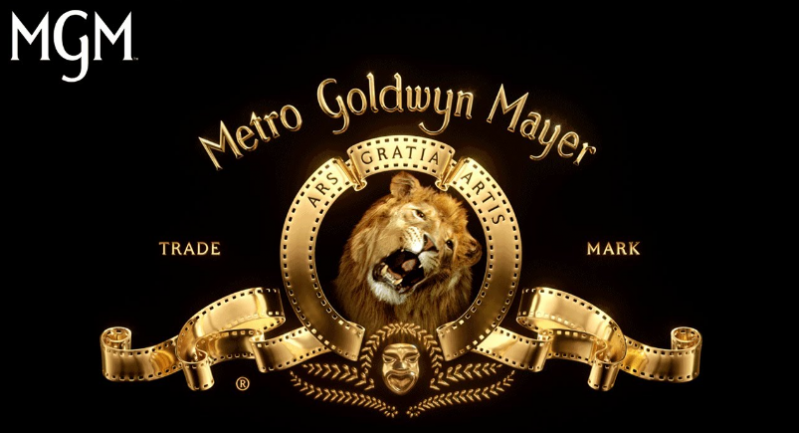The Entire History of MGM: The Lion Keeps Roaring Even Today

© MGM.com
Have you ever wondered how the Hollywood film industry became dominated by mega studios? It all started a century ago with the rise of MGM and its revolutionary impact on the way movies were made and marketed.
MGM, or Metro-Goldwyn-Mayer, was founded in 1924 and quickly became one of the leading studios in Hollywood. Its iconic lion logo and roster of top stars made it a powerhouse in the industry. This is the history of MGM.
The Iconic Hollywood Studio
Once known for its slogan “More stars than there are in heaven,” MGM was Hollywood’s largest studio. It boasted legendary celebrities like Judy Garland, Clark Gable, Fred Astaire, Katharine Hepburn, Jean Harlow, and Gene Kelly.

Back then, MGM was synonymous with extravagant films. It was situated on a sprawling lot in Culver City that expanded from Samuel Goldwyn’s original 40 acres. The studio’s massive property spanned 3 miles and included over 45 buildings, 14 stages, and numerous outdoor sets.
Today, MGM stands as an IP outpost, acquired by Amazon for $8.5 billion in 2022. However, its legacy as a powerhouse of classic cinema endures.

The Movies That Made MGM Iconic
MGM was a hub for timeless classics, backing iconic films like “The Wizard of Oz,” “Gone With the Wind,” “Ninotchka,” and “Babes in Arms” in 1939 alone. Before investor Kirk Kerkorian’s acquisition and subsequent dismantling of the studio, MGM housed some of the greatest stars and productions in Hollywood history.

Notably, the Arthur Freed production unit churned out beloved musicals such as “Meet Me in St. Louis,” “An American in Paris,” “Singin’ in the Rain,” and “Gigi.” The iconic MGM lion, synonymous with the company, graced screens for most of its existence, symbolizing the studio’s enduring legacy in cinema.
The History of MGM
MGM, initially Metro Goldwyn Productions, originated in April 1924 from the merger of Goldwyn Pictures, Louis B. Mayer Productions, and Metro Pictures. Under the leadership of Marcus Loew, a prominent figure in the New York City entertainment scene, the company transitioned from stage production to film exhibition. Eventually, the company’s name was amended to include Mayer, reflecting Louis B. Mayer’s pivotal role as head of production until his departure in 1951.

Irving Thalberg, dubbed the “boy genius” producer, joined MGM after being recruited from Universal by Louis B. Mayer in 1923. Thalberg’s career would later inspire F. Scott Fitzgerald’s unfinished novel “The Last Tycoon,” which was subsequently adapted into film and television.
Additionally, MGM’s merger reportedly included Cosmopolitan Pictures, founded by publishing magnate William Randolph Hearst for his mistress Marion Davies. This move not only consolidated and optimized labor forces but also aligned MGM with one of the most influential newspaper moguls of the time.

What Was the Industry Like Back Then?
In 1924, Hollywood was a burgeoning hub of entertainment, with around 50 production companies and nearly 30,000 people employed in the industry. The total cost of movie production surpassed $156 million annually.
Despite its rapid growth, Hollywood was a place of contrasting perceptions, referred to as both the “Sodom of the Twentieth Century” and the “Paris of America.” It was home to various religious movements, earning the nickname “City of Churches.”

Among the key players in the industry were Universal, Paramount, United Artists (established in 1919), Warner Bros., and Disney (both incorporated in 1923). Amidst this dynamic environment, MGM emerged as a powerhouse, poised to lead the entertainment empire from the forefront.
What About the Culver City Studio?
The Culver City studio, initially established by Thomas Ince and later acquired by Goldwyn Films in 1919, was a bustling center of filmmaking activity in 1924. With 2,500 employees and 10 stages, it was projected to film an impressive 18,000 miles of celluloid.
Notably, Stage 6, covering an acre and a half, was hailed as the largest in the world at that time. MGM’s Culver City backlot was one of the earliest examples of a massive studio complex, featuring both temporary structures and permanent sets like “New York Street” and “Russian Street,” which enabled filmmakers to recreate various locations from around the globe while remaining in Culver City.

In April 1924, the merger of several film companies was described by the Los Angeles Times as the formation of “one huge studio.” Metro executive Joseph Schenck expressed optimism about the merger, stating that it promised greater prosperity for the industry. He assured employees of increased productivity, emphasizing the goal of producing more and higher-quality films. However, Schenck clarified that “better pictures do not necessarily mean bigger pictures,” indicating a focus on improving quality rather than solely increasing scale.
The History of MGM Continues
Despite Joseph Schenck’s caution regarding larger productions, MGM was poised for significant endeavors. Marcus Loew envisioned the studio creating “the greatest motion picture of all time” with “Ben-Hur: A Tale of the Christ” (1925). While the studio explored filming in various locations, including Italy and Catalina Island, crucial scenes, including the iconic chariot race, were shot on the MGM lot.

During filming, director Fred Niblo orchestrated the massive production with 10,000 extras at the Colosseum, directing from a tower 100 feet above ground and coordinating 42 cameras. MGM even chartered an airplane for aerial footage. “Ben-Hur” stood as one of the most extravagant films of the silent era, showcasing the medium’s capacity for grandiose scenes.
What Was MGM’s Goal?
The Metro, Goldwyn, and Mayer partnership aimed to streamline production, consolidate resources, and enhance service for exhibitors. Over half of MGM’s initial films were completed ahead of schedule, reflecting the efficiency of the collaboration. With Loew’s theaters, the largest ownership in the country, the partnership ensured a reliable return on investment. Marcus Loew highlighted the consolidation of great stars under one banner, expressing confidence in MGM as the exhibitors’ premier source of film supply.

This sentiment was echoed by the Exhibitors Trade Review, recognizing the combined strength of Goldwyn’s lot and Loew’s theaters. Ultimately, the key to success lay not only in the infrastructure but also in the leadership, embodied by Louis B. Mayer.
What is your favorite part of the history of MGM? Do you have a favorite movie from the company?
You might also want to read: Did You Know Pepsi-Cola Was Once Named Brad’s Drink?


